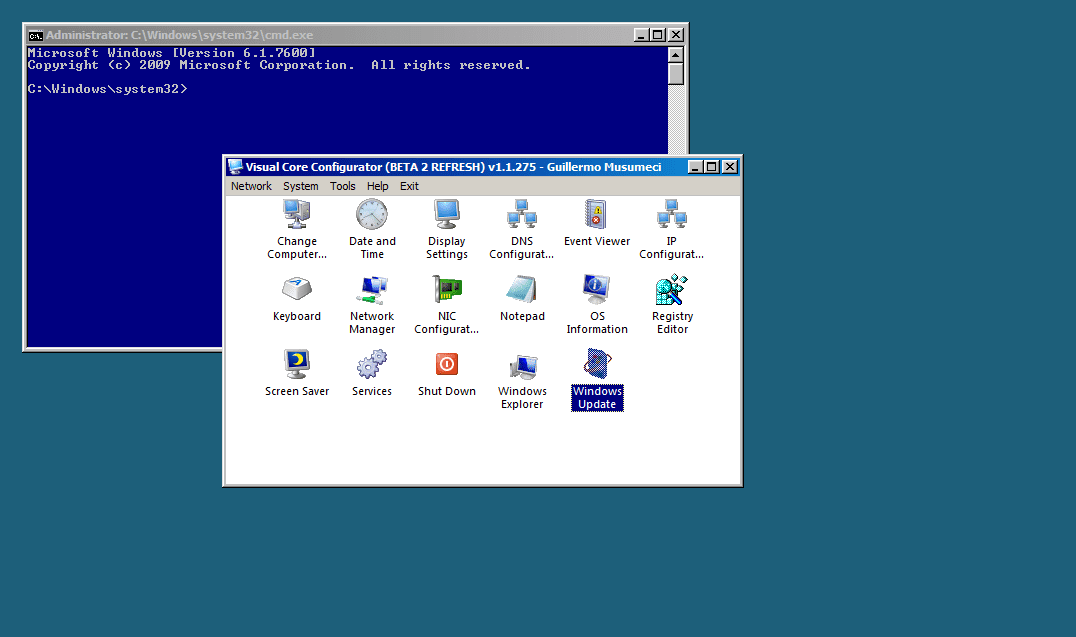

- Windows server 2008 iso image upgrade#
- Windows server 2008 iso image code#
- Windows server 2008 iso image windows#
Windows server 2008 iso image code#
A software-based application firewall can assist in detecting and preventing malicious code execution, network propagation and data exfiltration by an adversary. Implement a third party software-based application firewall that performs both inbound and outbound filtering of network traffic.

Implementing EMET for applications that commonly interact with data from untrusted sources can reduce the risk of successful malicious code execution as well as assisting in the identification of such attempts.
Windows server 2008 iso image windows#
Microsoft Windows Server 2008 and Windows Server 2008 R2 servers will be at a higher risk of being compromised due to unpatched security vulnerabilities, and lack additional security functionality of newer Microsoft Windows Server versions to protect privileged account credentials from being captured by an adversary and used to propagate throughout a network. Instead, a vendor-supported operating system should be used for these activities, and a low privileged account used for all other non-administrative activities. to administer workstations, other servers or applications within an organisation’s network).
Windows server 2008 iso image upgrade#
For unsupported native applications either upgrade to supported versions or, if this is not possible, consider removing the application or using alternative applications to achieve similar business functionality.Application control, when implemented appropriately, can detect and prevent malicious code execution and network propagation attempts by an adversary. Implement application control, such as Microsoft’s AppLocker.Organisations continuing to operate a fleet of Microsoft Windows Server 2008 and Windows Server 2008 R2 servers beyond the end of support date should implement the following mitigation strategies: Operating a fleet of Microsoft Windows Server 2008 and Windows Server 2008 R2 servers The advice is separated into mitigation strategies for organisations operating a fleet of Microsoft Windows Server 2008 and Windows Server 2008 R2 servers, and mitigation strategies for organisations that have a limited number of Microsoft Windows Server 2008 and Windows Server 2008 R2 servers in order to support legacy business applications. The advice in this publication is intended for organisations unable to upgrade from Microsoft Windows Server 2008 and Windows Server 2008 R2. Organisations yet to upgrade to a newer supported operating system should review their risk assessments and begin planning for the implementation of mitigation strategies to reduce their risk exposure – noting there will still be an overall increase in risk exposure until such a time that Microsoft Windows Server 2008 and Windows Server 2008 R2 servers are upgraded. Organisations using Microsoft Windows Server 2008 and Windows Server 2008 R2 should upgrade to the latest version of Microsoft Windows Server 2016 or Windows Server 2019 to continue receiving patches for security vulnerabilities, while also benefiting from security improvements in the newer operating systems. Subsequently, adversaries may use these unpatched security vulnerabilities to target Microsoft Windows Server 2008 and Windows Server 2008 R2 servers. As such, organisations no longer receive patches for security vulnerabilities identified in these products. On 14 January 2020, Microsoft ended support for Microsoft Windows Server 2008 and Windows Server 2008 R2. The Strategies to Mitigate Cyber Security Incidents ranks timely patching of security vulnerabilities, as well as using the latest operating system versions, as essential mitigation strategies in preventing cyber security incidents.


 0 kommentar(er)
0 kommentar(er)
